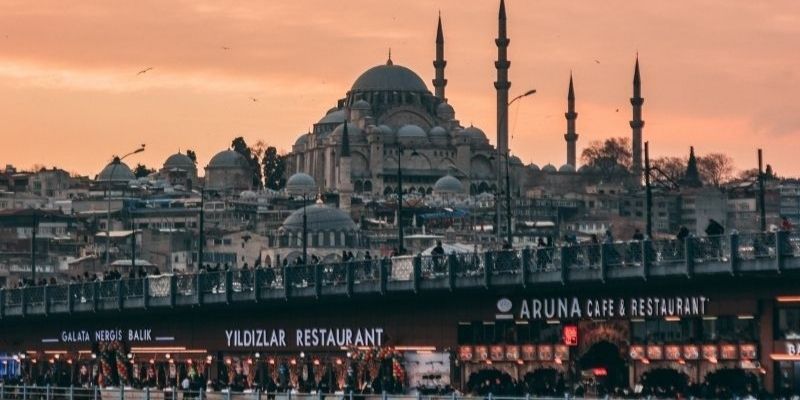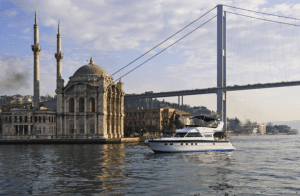What is Istanbul Famous For? 12 Must-See Places to Visit

The Art of Living in Turkey contains affiliate links and is a member of the Amazon Services LLC Associates Program. If you make a purchase using one of these Amazon links, I may receive compensation at no extra cost to you. See my Disclaimers for more information.
Ever wondered, ‘What is Istanbul famous for?’ Most people think of iconic sites like Hagia Sophia, the Blue Mosque, and the Grand Bazaar—and they’re absolutely worth seeing.
But Istanbul has so much more to offer beyond these highlights.
Since moving here in 2019, I’ve spent countless weekends exploring this city, yet there’s still no way I could cover all Istanbul offers on my own.
Luckily, I’m part of a vibrant expat community, and together we’ve discovered both the well-known and hidden gems of Istanbul.
With that in mind, I’ve rounded up top recommendations you won’t want to miss on your next Istanbul trip—from well-loved landmarks to lesser-known spots that locals and expats alike adore.
Let’s dive into the best places to visit, whether you’re looking for famous landmarks or something off the beaten path.
⭐️⭐️⭐️⭐️⭐️
✅ Many company options to compare
✅ Internationally known
✅ Multiple car classes
Istanbul: a one-of-a-kind city
When looking into the rich tapestry of Istanbul, there are key questions to ask yourself for an immersive, authentic experience that you will enjoy.
A few questions I would ask myself if I were you:
- What types of places do I want to see?
- Neighborhoods?
- Historical sites?
- Nature? (good luck)
- Do I want lots of downtime or go-go-go?
- Do I want to stay in the thick of it all or outside the tourist areas?
- What kind of accommodations do I want to stay in?
- What is my budget?
All of these will impact what you deem important for your vacation. Because of that, I have broken up the places to see according to the reason they might be enjoyed.
Sure they can be in more than one category but hopefully this will help you as you plan and think through your trip.
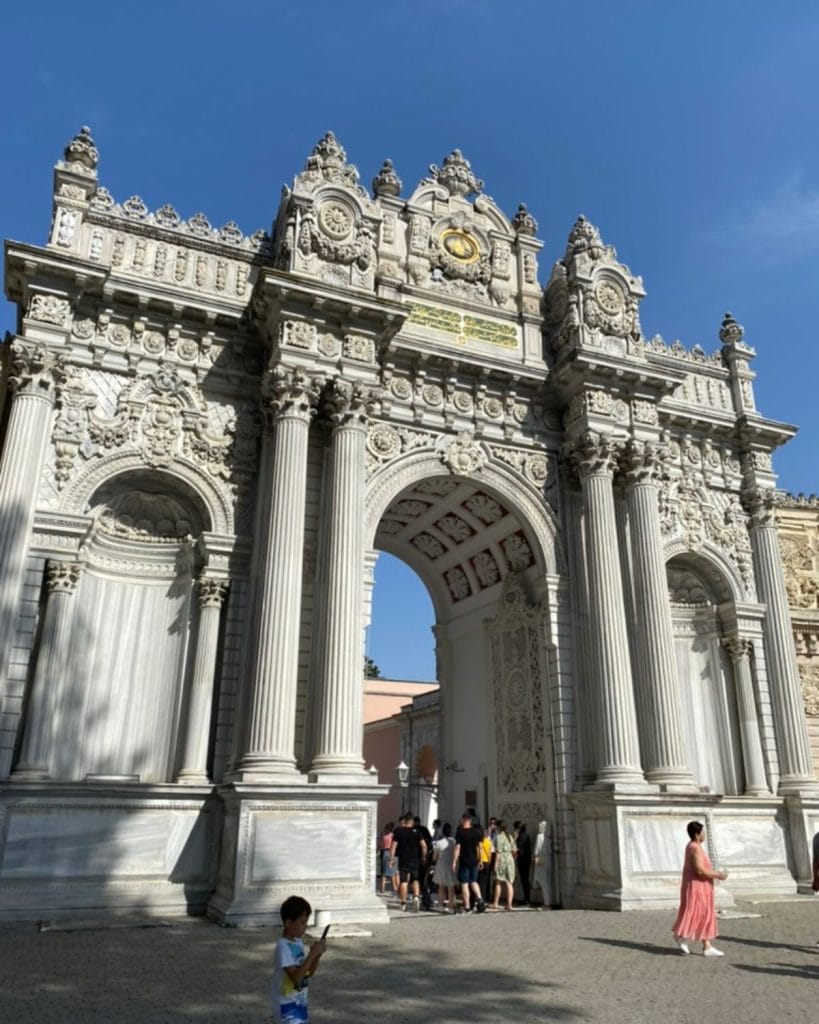
Historical Places in Istanbul
These are top places steeped in history, a testament to Istanbul’s storied past. There are even historic areas of Istanbul that are on the UNESCO World Heritage list.
These include the sites in Sultanahmet (think Hagia Sophia and the Blue Mosque), the Suleyman Mosque, the Ancient Walls of Istanbul, and the Zeyrek Mosque (Pantocrator Church).
The longevity and historical cues add meaning and depth to these places, making your Istanbul experience all the more enriching.
Hagia Sophia
The Hagia Sophia, standing as a testament to the rich religious history of Istanbul, is one of the city’s most iconic and oldest landmarks.
Built in 537, it has served variously as a Greek Orthodox Christian church, a mosque, a museum, and now back to a mosque.
Did you know? Did you know this is the third iteration of the Hagia Sophia? It was built after the first two burned down!
Its architectural splendor and intricate detailing also stand as a symbol of the city’s blended past.
It features a massive dome, 108 ft in diameter, and displays a blend of Byzantine-era architecture, Christian mosaics, and Islamic calligraphy.
It is a must-visit for history fans and architecture lovers.
Pros
- An Important representation of Istanbul’s rich and diverse history.
- Opulent architecture and artistry spanning different cultures and religions.
- Located near other major attractions
Cons
- Always crowded, especially in the summer tourist season.
- The inside may be darker due to the preservation efforts of ancient mosaics.
- Must now pay 35 Euro to enter as a visitor.
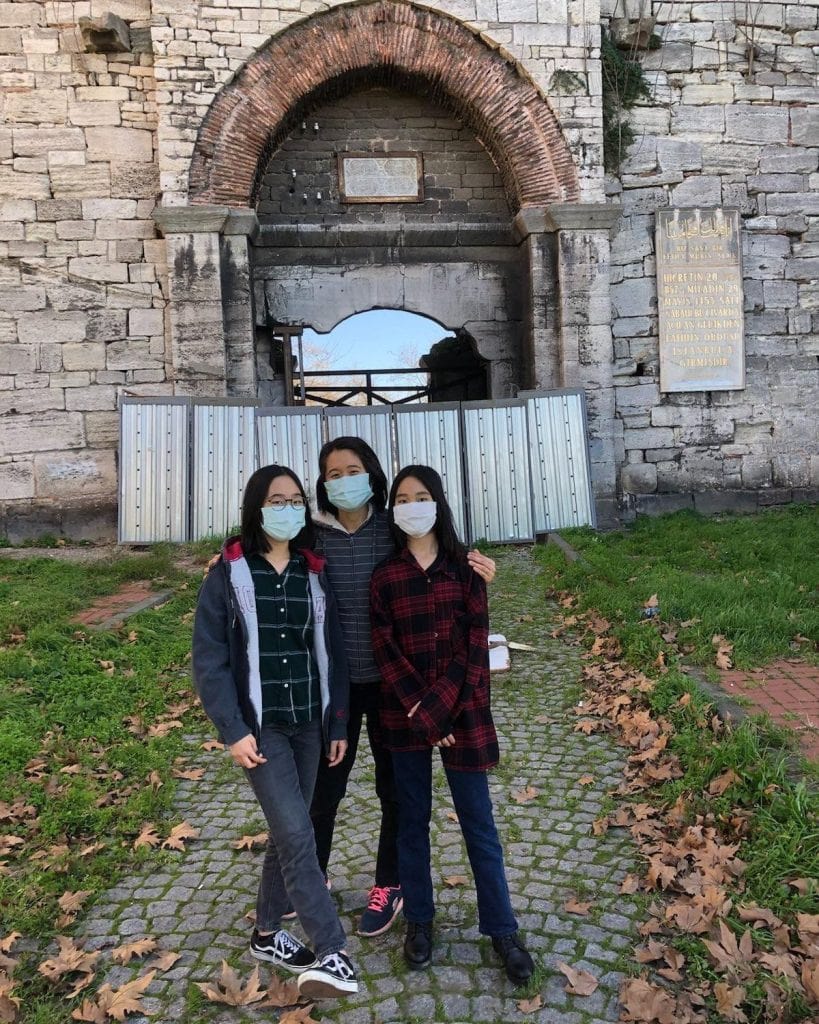
Theodosian Walls – Ancient walls of Constantinople
The Theodosian Walls are a testament to Constantinople’s ancient fortifications and offer you a glimpse into the city’s complex past.
They were built by Emperor Theodosius II in the 5th century to protect the city from invaders and while they aren’t fully intact, there is enough to be awed.
As you explore the ruins and remnants of towers, gates, and defensive structures still visible today, I am sure you will be inspired by the grandeur of it all.
Pros
- Able to look into the past at Constantinople’s defensive architecture.
- They are free to check out as they are a part of everyday life.
- You will find some pretty great photo opportunities.
Cons
- They aren’t always easy to access for those with mobility issues.
- You won’t always be able to find restrooms along the way.
- Be careful when walking on the walls as they are ancient and can be unsafe.
Chora Church
The Chora Church, also known as the Kariye Museum, is a hidden gem, renowned for its exquisite Byzantine mosaics and frescoes.
Originally built as a church in the 4th century, it was later converted into a mosque and then a museum. Currently, there is a section that is used as an active mosque and another section that is a museum.
The interior of the Chora Church is adorned with stunning artwork depicting scenes from the life of Christ and the Virgin Mary, showcasing the height of Byzantine artistry.
As of June 2024, the mosque/museum is newly re-opened and is totally worth the visit.
Pros
- Check out the incredible frescos and mosaics from the Byzantine era.
- The surrounding neighborhood is quite cute and there is a restaurant just to the right where we had a nice snack after the long walk to get there.
Cons
- Not all areas are accessible to the public.
- There is a 20 Euro fee and conservative dress is enforced (with options for renting head coverings and body covers).
- Not accessible during prayer times.
Galata Tower
The Galata Tower, an iconic symbol of Istanbul’s skyline, offers incredible panoramic views of the city from its observation deck.
This tower, which dates back to the 14th century, has served as a watchtower, a prison, and today, a popular tourist attraction.
When you get there, you hop in an elevator and go to the 6th floor if memory serves me correctly. You climb two more flights of stairs to get to the observation deck and see a 360° view of Istanbul.
As you climb down the stairs, you will wander through the museum part of the attraction. It is really quite well done with an epic model of the city on one floor.
Pros
- It is one of the oldest buildings in Istanbul and has a rich history.
- Lots of great restaurants close by for a light snack or full meal after all those stairs.
- The views are epic. I recommend going at sunset for the prettiest photos.
Cons
- Can get quite crowded and have long lines, especially in the summer.
- There is an entry fee, but if you get the Muzekart, it is included in that.
- There aren’t a lot of tourist attractions in the area but Beyoglu is a really nice area to wander around.
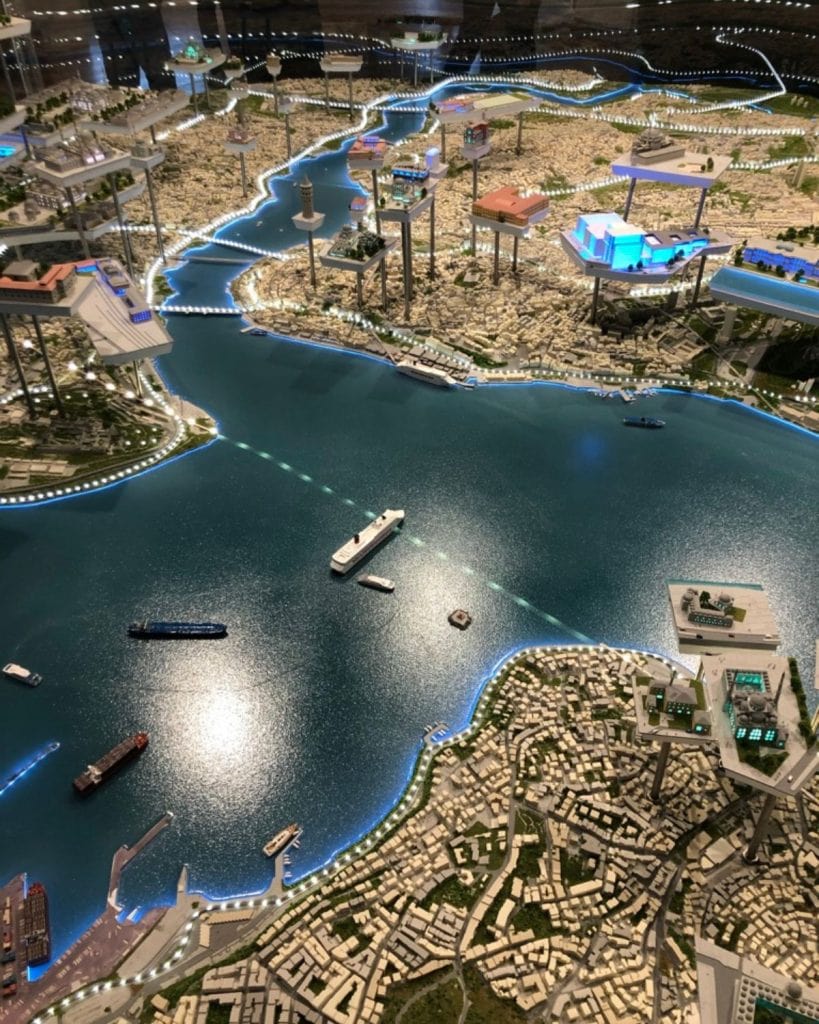
Top Landmarks for Architectural Intricacy
Istanbul’s breathtaking architecture is a confluence of Byzantine, Ottoman, and modern influences.
Be it mosques, palaces, or bazaars, note the detailed craftsmanship, unique styles, and historical facets to truly appreciate the architectural marvels.
Blue Mosque
The Blue Mosque, known officially as the Sultan Ahmed Mosque, is an iconic example of both Istanbul’s and the Ottoman Empire’s historical grandeur.
It was built between 1609 and 1616 and is known for its six minarets and magnificent blue-tiled interior, creating a stunning visual spectacle for visitors from around the globe.
It is also decked with 20,000 handmade Iznik tiles that give it its striking blue appearance, the mosque provides a rich feast for the eyes.
It’s a masterpiece in design and craftsmanship. It showcases the wealth and grandeur of the Ottoman Empire which is why I put it here instead of under historical.
Pros
- Exceptional examples of Islamic and Ottoman architecture.
- Strategically located in the heart of the city, allowing for easy access.
- Offering one of the most prominent skylines in Istanbul.
Cons
- Non-Muslims may not be able to enter during prayer times.
- It might get crowded, especially during peak tourist seasons.
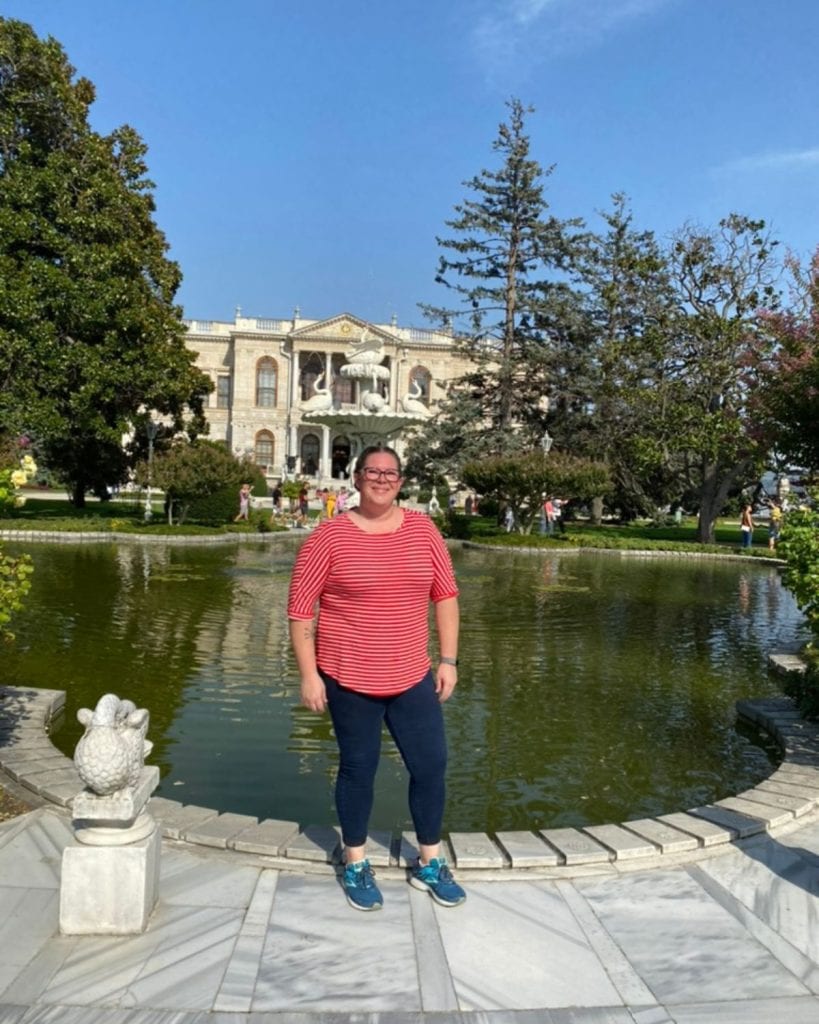
Dolmabahce Palace
The Dolmabahçe Palace stands as a grand symbol of Ottoman opulence and European elegance, nestled along the Bosphorus Strait.
This magnificent palace, built in the 19th century, boasts a stunning blend of Baroque, Rococo, and Neoclassical architectural styles.
Its lavish interiors, adorned with crystal chandeliers, intricate carpets, and ornate furnishings, offer a glimpse into the extravagant lifestyle of Ottoman sultans.
It is truly a fascinating place. As I wandered the corridors of this massive structure I was overwhelmed by the extravagance.
Pros
- The palace’s stunning architecture, luxurious interiors, and intricate details.
- It sits right on the Bosphorus which means epic photo ops.
- The historical significance goes all the way back to the Ottoman Empire.
Cons
- The Hammam is not included in the normal ticket price.
- Sometimes it is under restoration – call ahead to make sure.
- Of course, during tourist season it is quite crowded
Suleyman Mosque
Süleymaniye Mosque was designed by the famed Ottoman architect Mimar Sinan and it is a masterpiece of Islamic architecture.
It was completed in 1558 and stands on the city’s highest hill, dominating the skyline with its impressive dome and four minarets.
The mosque’s interior is covered with intricate tilework, beautiful stained glass windows, and elegant calligraphy.
You can explore the vast courtyard, peaceful gardens, and the impressive interior, which includes the main prayer hall and the tombs of Sultan Süleyman the Magnificent and his wife, Hürrem Sultan.
Pros
- Incredible panoramic views, especially the Golden Horn and the Bosphorus.
- Known as an architectural marvel and an example of the Ottoman Period.
- For those interested in Islamic art, you will thoroughly enjoy it.
Cons
- No admission during prayer times (the same for all mosques).
- It’s large so if you’re on a tight timetable, you may not be able to see it all.
- It isn’t close to all the other tourist spots in Sultanahmet.
Wandering through Neighborhoods
Wandering through the neighborhoods of Istanbul is one of my favorite things to do as I prioritize slowing down.
Each neighborhood tells its own unique story.
The narrow cobblestone streets of Balat reveal colorful houses adorned with hanging laundry and antique shops brimming with treasures.
Strolling along the Bosphorus in Ortakoy provides breathtaking views of the majestic bridge connecting Europe and Asia. Istanbul’s neighborhoods, each offering a glimpse into the city’s rich and diverse soul.
Pros
- Fascinating to see how others live so differently to ourselves.
- You can discover hidden gems when you go where others aren’t going.
- Whether it is the building that takes your breath away or a cat in an unlikely place, you will have many great photo opportunities.
Cons
- May feel like you’re just wasting time if it isn’t your thing.
- You might wander into unsavory parts of the city.
- Language barriers can make it hard to actually connect with people.
For those who want to learn more about the Culture
From the rich Kahve (Turkish Coffee) to intricately woven carpets and glowing intricate lamps, each product at the local markets reflects the culture’s intricate design sensibilities and traditional craft techniques. Look for authentic items that represent the culture, for they make exquisite keepsakes from your journey.
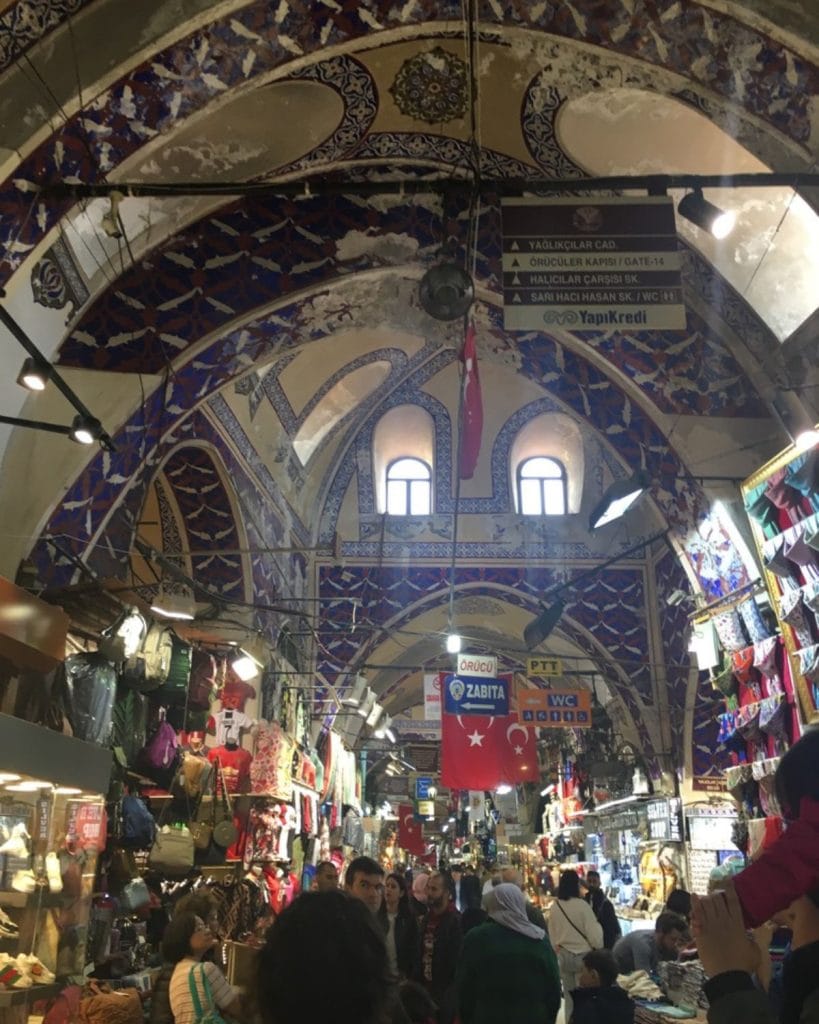
Grand Bazaar
As one of the world’s oldest and largest covered markets, the Grand Bazaar is often considered the world’s first shopping mall.
With over 60 streets and 4,000 shops, this remarkable bazaar offers a rich history dating back to 1455 and provides visitors with a memorable shopping experience.
From beautiful Turkish rugs, colorful lamps, and exquisite jewelry to delicious Turkish delight (Lokum) and rich Turkish coffee, the Grand Bazaar truly has something for everyone.
Pro tip: Just look inside and then shop outside. Once you leave the Grand Bazaar, you enter the spaces where all the locals shop.
From the bazaar all the way to Eminonu, you will find the same products and often half of the price just by leaving the bazaar. This is my favorite area for souvenir shopping.
Pros
- A plethora of local products that reflect Turkish tradition and culture.
- Possibility to immerse yourself in a rich and engaging history.
- Opportunity to haggle and score a bargain – NEVER BUY AT FULL PRICE
Cons
- Incredibly crowded all the time but particularly so during tourist season.
- Some shopkeepers are overly persistent. Don’t feel pressured to buy.
- If you try a sample, they will expect you to buy something.
Hodjapasha Cultural Center
Hodjapasha Cultural Center is a center for traditional Turkish arts and culture and is set within a beautifully restored historical hammam.
You will be treated to mesmerizing performances of Turkish dance, music, and Whirling Dervishes ceremonies in an intimate setting that preserves the authenticity of these art forms.
The center also hosts workshops where guests can learn about traditional handicrafts like calligraphy and ceramics.
If you want a deeper understanding and appreciation of Turkish culture, this is a must-visit destination.
Pros
- Authentic performances of Turkish dance, music, and Whirling Dervishes ceremonies.
- Opportunity to participate in calligraphy and ceramics workshops.
- They preserve the authenticity of the art forms showcased.
Cons
- Some historical buildings may have limited accessibility for individuals with mobility issues.
- There is a fee for admission and workshops.
- Availability of performances and workshops may vary, so plan ahead.
Hammam
The history of Turkish hammams, or bathhouses, dates back centuries to the time of the Ottoman Empire.
These historic structures served as important social hubs where people from all walks of life gathered for cleansing, relaxation, and socializing.
The tradition of the Turkish hamam is deeply rooted in Roman and Byzantine bathing practices, but a distinct Turkish influence emerged around the 14th century.
Today, Turkish hamams continue to thrive, offering visitors a glimpse into a timeless tradition of indulgence and self-care.
While this may not be for everyone, this is one of my favorite things to do in Turkey. I go on average at least once a month!
Pros
- Incredible cultural experience.
- Great for your lymphatic system, overall health, and of course your skin.
- A unique thing to do with the girls/guys on your trip.
Cons
- You’re basically naked, with just something around your lower half.
- Ones in tourist areas can be quite expensive.
- Hygiene issues if not cleaned well.

Turkish Food & Drink
In my opinion, one of the reasons to come to Turkey is for the food. I have friends who don’t love it but completely do.
They use a lot of thyme, cumin, mint, red pepper flakes (not spicy ones), and garlic. They have a lot of soups but not a lot of salads. And they do tend to overcook their veggies.
But seriously, Istanbul is a great melting pot for food. You can find it all here!
If food is your thing, I recommend taking a food tour. I did a write-up of the best ones in Istanbul.
You should definitely check out kebabs, the national dish of Turkey, as well as their long list of desserts.
Not to mention the many drinks of Turkey. Raki is the national liquor and makes a great gift for someone who enjoys a licorice flavor.
But there are so many drinks like ayran (you probably won’t love on your first go but will likely fall in love after a few attempts), Turkish tea and coffee, and şerbet, a sweetened fruit juice that has been around since the Ottoman period.
Wanna skip the food tour but want to try different things? Check out Ciya Sofrasi where the founder collected recipes from all over Turkey to preserve the authentic repieces that were beginning to die out.
Pros
- Discover new authentic Turkish dishes that you can make at home
- Mezzes are a great way to try a small amount of multiple things, plus it is a great cultural experience.
- Great street foods like simit, borek, fresh juice, lokma, and so much more!
Cons
- Not going to a reputable place and getting an upset stomach
- It can be expensive to try all the things you want to.
- Turkey isn’t as sensitive to dietary restrictions just yet which may cause issues for some.
Other Istanbul Experiences
Here are a few other things that don’t necessarily fit into the other categories but are definitely worth your time.
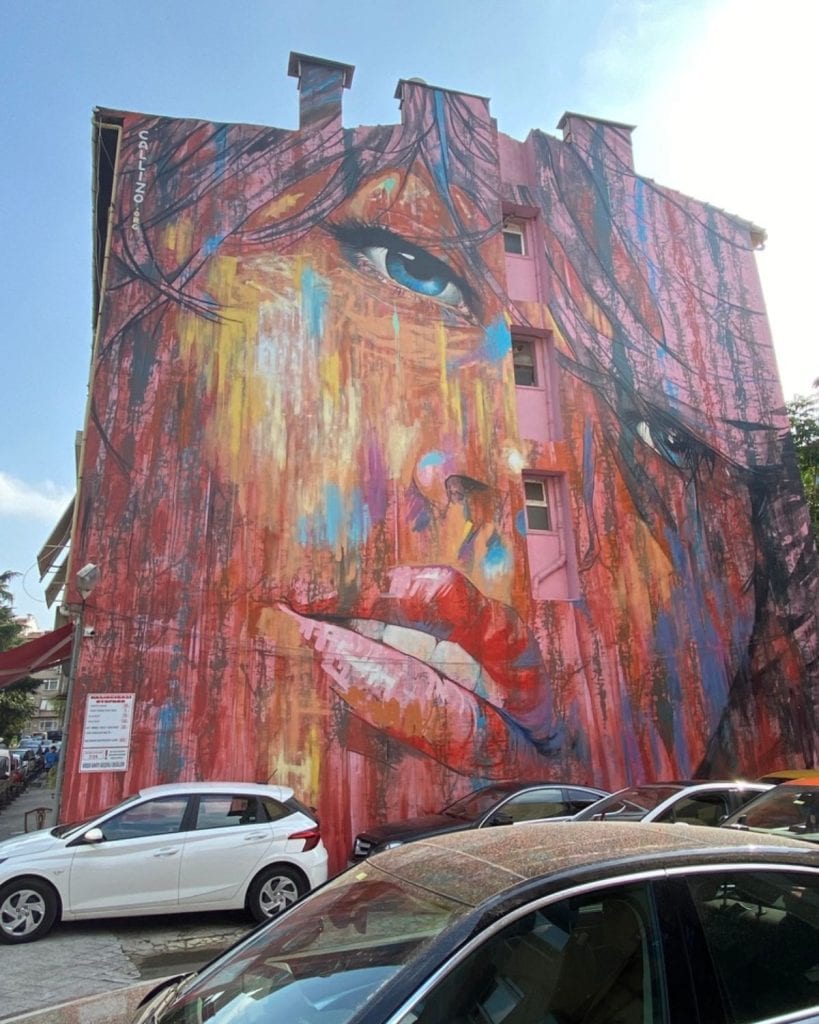
Asian Side of Istanbul
Wandering around the Asian side of Istanbul is a delightful escape from the bustling, chaotic streets of the European side.
I find it to be a much more laid-back and authentic experience.
Kadıköy is one of the main neighborhoods on the Asian side and is a lively district known for its street markets, trendy cafes, and relaxed atmosphere.
I love walking along the waterfront, or sahil, and enjoying the lovely salty water smell that reminds me of my childhood. The sahil is a lively place where you can see a wide variety of scenes.
Moda is one of the neighborhoods in Kadıköy district worth visiting. Though Turkey is known for Turkish coffee, Western coffee is taking over. There is no shortage of 3rd wave coffee shops throughout Moda.
Lastly, in Kadıköy, I would recommend Bağdat Street (Bağdat Caddesi). I would say it is the Istiklal of the Asian side but wider, with more options and perhaps longer.
Beyond Kadıköy, there is also Kuzguncuk, a quaint little town in Uskudar. It doesn’t take long to wander through but they have colorful buildings like Balat, delicious coffee at Glow, and some great bookstores.
Exploring this side of the city provides a glimpse into the local way of life, with traditional teahouses, bustling markets, and friendly locals welcoming visitors with open arms.
But I may be a little biased since I live here on the Asian side.
Pros
- More peaceful, calm atmosphere…at least within Istanbul.
- See buildings from the 1900s. The earliest I have found is 1901!
- Get to observe more easily how locals live where as the European side feels much more for tourists and foreigners.
Cons
- If you’re limited on time it might be hard since it isn’t by tourist attractions.
- Less English is spoken on the Asian side, though the younger generation typically knows it much better.
- Some great bars and nightlife but not as much as the European side.
⭐️⭐️⭐️⭐️⭐️
✅ Tour is capped at 10 people
✅ Wine, water, and coffee/tea are included
✅ Upgrade to private is possible
Bosphorus Cruise
Taking a Bosphorus cruise offers a unique journey along the strait that divides Europe and Asia and provides panoramic views of the city’s iconic landmarks.
From the comfort of the boat, you can marvel at historic sites such as the Dolmabahçe Palace, Ortaköy Mosque, and the majestic Bosphorus Bridge.
You will also get a glimpse into daily life along the waterfront, with traditional fishing boats and elegant mansions lining the shores.
Being on the water is my thing. I love it. I take the ferry for transportation as often as possible. Taking a short cruise along the Bosphorus is just the next level.
Pros
- A unique perspective of Istanbul that not everyone gets to see.
- Typically the tours will come with a guide so you will also get to learn some new things.
- To me, being on the water is one of the most calming things, which is nice since Istanbul life can be a bit stressful.
Cons
- If it is raining, it will obviously not be nearly as enjoyable.
- Price can be an issue but there are both private and group options, so there is quite a range of prices.
- Typically tours only last for 2-3 hours, though you can hire boats for longer.
⭐️⭐️⭐️⭐️⭐️
✅ Bring your own alcohol for a small fee
✅ Complimentary tea, coffee, and water
✅ Free WiFi on board
Shopping on Istiklal
Istiklal Avenue, one of Istanbul’s most famous streets, has a diverse array of shops, boutiques, cafes, and street performers.
It is a bustling pedestrian street in the Beyoglu district and is a hub of activity, attracting locals and tourists alike with its vibrant atmosphere.
This is personally not my scene but I have been many a time. It is often quite crowded but I guess all of Istanbul is.
If shopping is your thing, this is your place. You will not only find shops and restaurants but also art galleries and museums. Especially the Meşher gallery.
Pros
- Lots of options – both international and local boutiques – shop til you drop.
- There are often a lot of incredible street performers!
- Istiklal is lined with some beautiful historic buildings as well.
Cons
- Because it is so crowded and a tourist area, beware of pickpocketing.
- It is a pedestrian street and may be difficult for those with mobility issues.
- The prices will likely be a bit inflated as it is a tourist area.
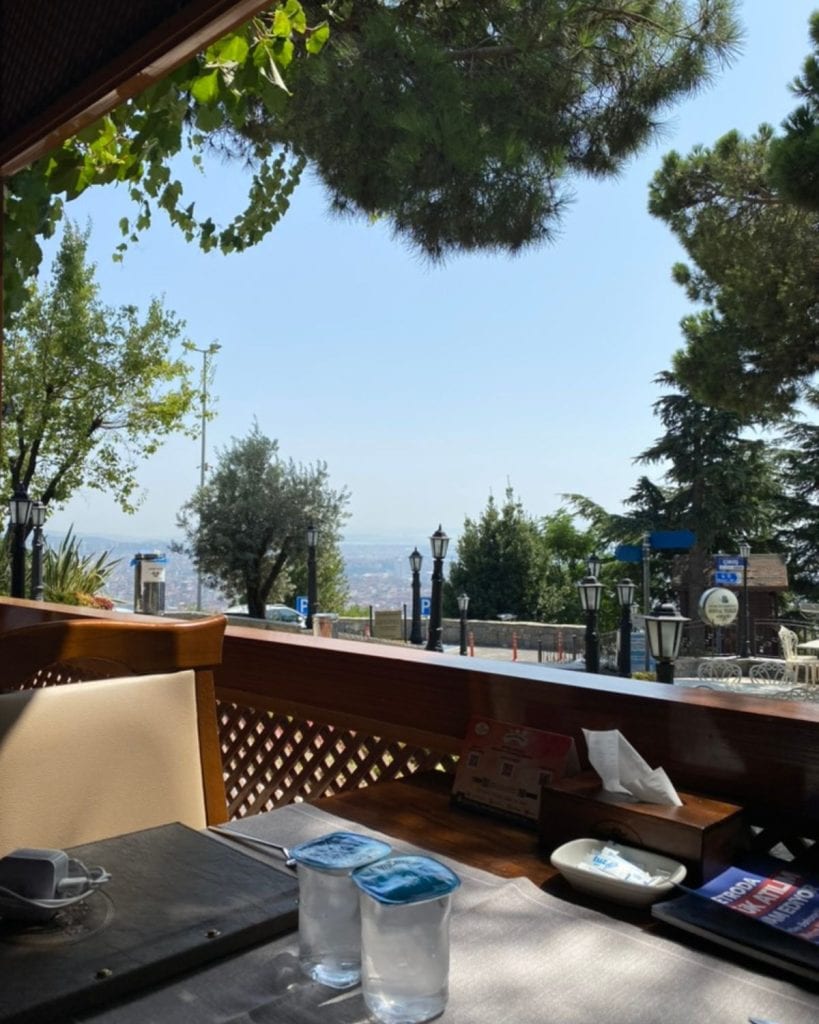
Camlica Hill
Camlica Hill, located on the Asian side of Istanbul, has some of the most breathtaking panoramic views of the city and the Bosphorus.
Anyone seeking a peaceful retreat and stunning vistas, locals and tourists alike, will enjoy this park.
The first time I went with some friends I was shocked and how far I could see. It is quite a calm, quiet space which is lovely to find in the chaos of Istanbul.
Pros
- There is a restaurant up top where you can enjoy a meal and a view.
- The sunset is incredible here. Between the views and the orange glow as the sun goes down for the night, a perfect spot for a romantic picnic.
- Sometimes you just need to escape to some green in the concrete jungle.
Cons
- It is a little difficult to get to without a car. Public transportation or a taxi are your best options.
- If it is foggy or smoggy air, you won’t be able to see very far.
- There are restrooms but often don’t have toilet paper, so make sure to have your tissues on hand.
More top places to see
There are so many places that they simply couldn’t all make such a list. I wanted to provide a list though for you to be able to consider these as well.
- Golden Horn – There is a cute little sky tram that takes you to the top and you can enjoy beautiful views of the Golden Horn while drinking tea.
- Basilica Cistern – I have heard mixed reviews. Most of my time here it has been under renovation but has recently reopened. It is an expensive attraction but if you’re into that, you’ll probably love it.
- Topkapi Palace – This is really a beautiful palace and also has beautiful views of the Bosphorus. I’d definitely go here again.
- Black Sea – If you have time, you can take a ferry up to the Black Sea. It stops at multiple stops along the way.
Safety in Tourist Locations
Istanbul is largely safe for tourists, but as in any major city worldwide, you should still be aware of your surroundings. Here are a few tips to ensure a safe shopping and wandering experience:
- Stay aware: Keep your belongings close, especially in crowded areas like the Grand Bazaar or Istiklal. I prefer to use Travelon bags for extra safety.
- Be savvy: Understand the local currency and be careful with money transactions to avoid being overcharged. Always try to haggle in markets.
- Walk confidently: Hold yourself confidently to discourage any potential scammers. If someone drops something, don’t pick it up.
- Research before shopping: Inform yourself about the approximate prices of goods before heading out to shop. This can help you negotiate and avoid being overcharged.
- Don’t open a tab at a bar: You will find yourself with a high bill and things that you didn’t order on it. Tip in cash.
Istanbul Museum Pass
By now, you may be wondering if you should get an Istanbul Museum Pass.
I would say, like always, it depends. If you plan to go to a lot of museums and places listed on the card, then DEFINITELY. It will save you money if you want to see all those attractions.
If, however, you’re only wanting to check out a couple of them and you’d prefer to just wander around on your own, then it might not be worth it.
I buy the museum card for residents every year and it saves me boatloads of money. Not to mention it comes with some really great benefits.
You get discounts in certain restaurants, you get to skip the lines for purchasing tickets, and now, it is even on your phone through and app so you don’t have to worry about losing it!
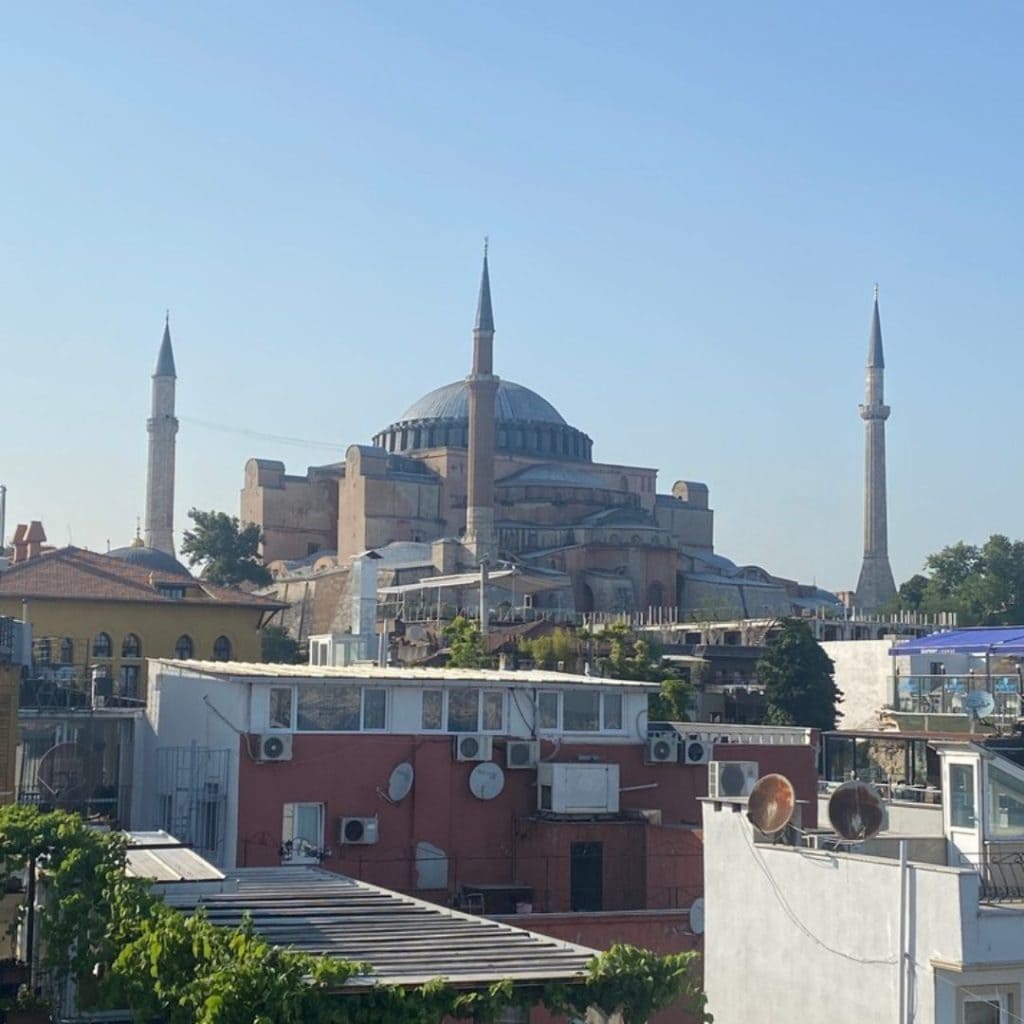
Attractions in Istanbul FAQs
What is the best time to visit Istanbul?
The best time to visit Istanbul is during either spring (April to June) or autumn (September to November), when the weather is pleasant, and there are fewer tourists. These seasons also offer the opportunity to experience local festivals and events.
Is Istanbul safe for tourists?
Yes, Istanbul is generally safe for tourists. However, as in any big city, it is always wise to stay aware of your belongings and avoid pickpockets, especially in crowded tourist areas and public transportation. Also, be aware of current travel advisories and take standard precautions.
What is the local currency and do they accept credit cards?
The local currency in Istanbul is the Turkish Lira. Major credit cards are becoming more widely accepted in Istanbul, particularly in hotels, restaurants, and many shops in tourist areas. However, smaller businesses and market stalls at places like the Grand Bazaar still prefer cash.
What is the local language spoken?
The official language spoken in Istanbul is Turkish. However, English is also widely spoken particularly in major tourist attractions, hotels, restaurants, and shops.
What kind of food is Istanbul known for?
Istanbul dishes feature a variety of flavors that cater to all tastes. Some of the city’s most popular food items are Turkish Tea, Simit, Börek, Turkish Delight, and so much more. These and other amazing dishes can be found in abundance throughout the city, from street vendors to high-end restaurants.
Final thoughts on things to do in Istanbul
Your Istanbul adventure should be as unique as you are. As you can see there are many different types of attractions to see. This article doesn’t even list them all.
I have tried to get a well-rounded collection for you as we looked at the question “What is Istanbul famous for?”
Whether you want history or architecture or something else, I hope you can find something here to add to your itinerary for Turkey.
Are there things that you wish you would have
Still looking for suggestions or have specific questions? Reach out and shoot me an email!
All that to say, the city of Istanbul is more than a destination; it’s a journey through history, art, culture, and charm, ready for you to uncover. This is what makes Istanbul famous.

Read more:
- Are you a traveling woman? Have you thought about bringing these…
- Best Rooftop Restaurants in Istanbul for the best views
- Need some help planning your itinerary from here? Book a consultation!
- Met a Turkish man while you’re in town…read this!
Turkey Vacation Basics
When I plan a trip these are the websites I use. I hope they help you plan your next adventure as well!
FLIGHTS: I am a huge fan of Skyscanner and WayAway.
VISAS: You can use the free e-visa portal here but for a few extra dollars you can use iVisa and someone else will handle any issues that may come up.
E-SIM: When I traveled to SE Asia I discovered e-sims and I’m never going back. Airalo has been easy and cheap!
TRAVEL INSURANCE: I use TravelInsurance.com for my trips abroad.
CAR RENTAL: I have loved working with Discover Cars when I rent cars in country.
AIRPORT TRANSFERS: I have used these transfers many times and they are always great. If you’d like more options, I also recommend GetTransfers.com as they allow you to compare companies.
ACCOMMODATION: Find the best Turkey hotel deals on Booking.com.
CITY TOURS & DAY TRIPS: You can browse GetYourGuide’s website to find just the tour you’re looking for! We also recommend the MegaPass for major cities.
